
|
|

|
YOU ARE HERE:>>COLLECTORS' RESOURCES>>Researching your artifacts
I very much welcome your contributions to these pages.
About your artifacts; short articles, long articles, or even a few pics and a few interesting notes.
 From indynickycat
From indynickycat
24th July 06
Researching your ancient artifacts
Introduction
When you are reading this you must be interested in ancient artifacts, a specific culture or history in general. I think we can agree that a large part of the charm of collecting ancient artifacts is not only it's aesthetic, artistic or monetary value, but also the context of when, where, how, by whom or for whom it was made.
Knowing a piece was made in a style specific for, say, a certain region in Greece, during the reign of a specific Roman emperor or during a particular Egyptian dynasty brings an object more to life.
Usually, the information descibed as above will be provided in the item-description by the seller. If you are very lucky, the seller will also have records of the previous owners of the piece, where they got it and sometimes even where the object was originally found.
Unfortunately being able to trace an object back to it's findspot by it's paper trail is rare, but not always impossible. How you can go about it is what this article is all about.
How to start
Assuming that the artifact you'd like to know more about came from a knowledgeable and trustworthy dealer, the best point to start will be the item-description. That will usually give you a handful of clues to start with, a name, a timeframe, a location. A simple web-search will get you a long way with that.
Also try using various spellings for the item as the spelling of names usually varies in different languages, not to mention even the best texts will have the inevitable typo's and you don't want to miss that one vital clue.
Joining one of the email-discussion lists that you can find in communities like Yahoo etc. can be very informative as well. The co-collectors and dealers you'll find there will be more than happy to share their knowledge to my experience, and apart from that it's always great to talk about one of your favourite subjects.
So, now that you have the basics it might be very usefull to stock up on a few of the more specialized books on your subject. Your money will never be wasted on a good book and there are many around. Also a good place to look is http://www.etana.org/abzu a site that provides many articles and texts in electronic form for download.
By this stage you should have quite a few notes and/or downloaded pictures on your artifact and maybe that's enough for you, but if not another option is to write to museum curators who are in charge of collections from your region or scholars on the same subject. In my own researches I've been very pleasantly surprised about how forthcoming most people and institutions were in giving me information or references and I can't thank them enough, their help has been invaluable.
So, to give a more tangible example it will give you the story of Henet, my own search for all I could find out about a 21st dynasty Egyptian shabti and everything related to her.........
The story of Henet
It all started when I bought this lovely lady:
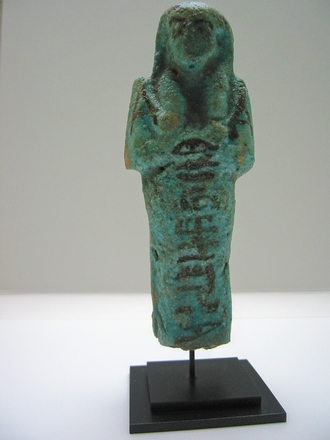
The description that came with it was: "a named shabti of the Third Intermediate Period, The Osiris, lady of the house, chantress of Amon, Henut-Mer(it). A parallell is in the Newark Museum, with same name and titles (see Araujo, Estatuetes funerarias Egipcias da XXI dinastia, page 85 (unfortunately without a picture, but this name is quite rare and the combination of it with these titles make the match reasonable)."
This already told me a lot. Her name was Henut-Mer(it), the phrase "lady of the house" told me she was married, "chantress of Amun" told me that she was a priestess and probably from the Theban area, as the Amun cult was mainly concentrated in that area and especially in the Third Intermediate Period, when the High Priests of Amun ruled Upper Egypt and assumed pharaonic titles.
I got in touch with the Newark Museum to see what information they could provide and the most interesting bit that related to my research was: "This coffin was found with a number of others within an older eighteenth Dynasty tomb, that of Amenemhat, in the necropolis on the West Bank at Thebes. In 1926 a University of Liverpool archaeological expedition excavated Amenemhat's tomb and its contents." [...]Inscribed for Hen.t-Mer.t ("Mistress of Love"), priestess of Amon-Ra, songstress, Mistress of the House (title for a married woman)."
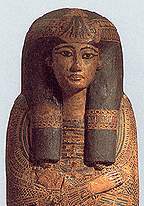
This information was priceless. The period, name, titles, everything fitted and it gave me more clues for putting together an even bigger picture. Whether my shabti was found in the same tomb as the coffin is still under investigation, but it is very possible so I looked for what I could find about the tomb and it's excavation.
There were several 18th dynasty tombs for men named Amenemhat/Amenemhet, most notably TT (Theban Tomb) 82 and 97. The find from a friend of an online dissertation gave me my next answer: is was TT97! "Särge aus der Cachette TT 97, Scheich Abd el-Qurna: Mond/Emery in AAA 16, 1929, 49-74; PM I.22, 676.
TT 97.5 = Jansen-Winkeln B/4.3.72, Niwinski-Nr. 441; Sargdeckel der Hnwt-mr(j)t: Ebd., 61, Taf. 67a, 68 Nr. 5."
So Henet didn't have a tomb of her own, but was placed in an existing older tomb along with several others. This was common practice throughout Egyptian history. I found a layout of the tomb and it's location in the Theban hills in a wonderful Japanese database ( http://www.littera.waseda.ac.jp/egypt ).
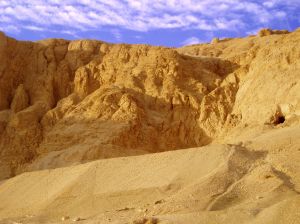
Another gem of information were the names of the people who excavated the tomb. One was Walter Bryan Emery, 1903-1971. British Egyptologist and archaeologist. Director of the archaeological survey of Nubia 1929-35; Edwards Professor of Egyptology, University College London 1951-70; Field Director of the Egypt Exploration Society 1952-71.
In 1924 he was Field Director of sir Robert Mond's Excavations at Thebes for the Liverpool University.
He made several clearings, restorations and protective operations into a score of tombs at Sheikh Abd el-Gurnah.
In what by many shabti-collectors is considered the very best book on Third Intermediate Period shabtis, Araujo, L. M. de: Estatuetas funerarias egipcias da XXI dinastia, there were also some interesting tidbits.
"p. 466: "The coffin of the lady Henutmer, showing the titles Lady of the House and Chantress of Amun, may be found at the Newark Museum, although the location of her statuettes is unknown."
Hello, I actually know something the professionals don't. One of her statuettes is right here in my livingroom, another is in the Petrie Museum under number UC55304!
"p. 528 [note 420] [..]Today the coffin is at the Newark Museum, ex Albert Eid collection.[..]"
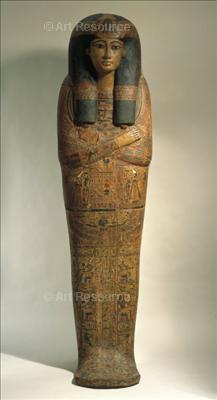
Well, now that has nothing to do with my shabti, only with the coffin, but that Albert Eid seemed to have been quite the character and it was fun to connect that to Henets' story... "
"Albert Eid, antiquarian, Cairo and Bruxelles (1948-1949) [...] The last part of the manuscripts had also been sold on the black market and were bought by an antique dealer, Albert Eid. He refused to hand over codex 1 to the local authorities and smuggled it out of the country. Unable to sell it in the United Status, he placed it in a safe in Belgium. After his death, his wife took over with the illegal sale of the book.
That was when it was noticed by Professor Gilles Quispel, who bought it via the Jung Foundation in Zurich, so that it could be offered as a birthday present to the psychoanalyst Carl-Gustav Jung.
From http://www.nag-hammadi.com a website about the Nag Hammadi texts (the gospel of Thomas)."
Conclusion:
It's amazing what you can learn about your artifact(s) once you seriously start digging into it. I still have several things I want to look into, but already a picture emerged. After thousands of years Henet came to life again in a way. I had a glimpse of how and where she lived, where she might have worked and worshipped her god Amun. How loved and appreciated she was to have received an extensive burial with an elaborate, beautiful coffin and grave goods that have survived the ages. In a way she lives on, just like it was intended all that time ago....
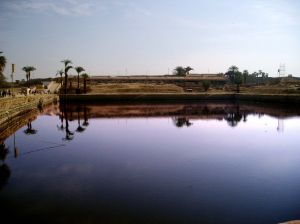
ã 2006, I.L. Waanders
I sincerely wish to thank the following persons for their invaluable help with my research:
Bron, Miguel Angel, Niek de Haan, Kat Ryan, Thierry Benderitter, Barbara Piasecki-Strom and Stephen Quirke
Literature and resources:
Araujo, Luis Manuel de: Estatuetas Funerarias Egipcias da XXI Dinastia
Ranke, Herman: Die Ägyptischen Personennamen volumen I
Falck, Martin Klaus Wilhelm von: Textgeschichtliche Untersuchungen zu Götterreden und verwandten Texten auf ägyptischen Särgen und Sarkophagen von der 3. Zwischenzeit bis zur Ptolemäerzeit (dissertation)
The Theban Necropolis Database: http://www.littera.waseda.ac.jp/egypt
AZBU electronic library: http://www.etana.org/abzu
Digital Egypt for Universities: http://www.digitalegypt.ucl.ac.uk
The Petrie Museum database: http://www.petrie.ucl.ac.uk
Osiris Net: http://www.osirisnet.net/e_centra.htm
The Theban mapping project: http://www.thebanmappingproject.com
Heidelberg University library: http://www.ub.uni- heidelberg.de/helios/fachinfo/fachref/aegypt/online.htm
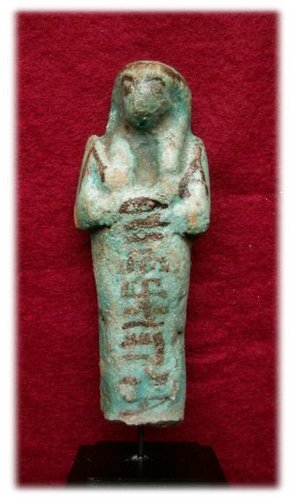
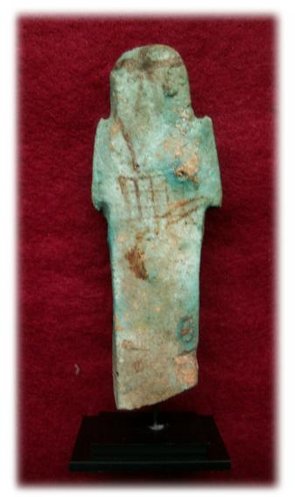
April 2008
We have been waiting patiently.... :o)
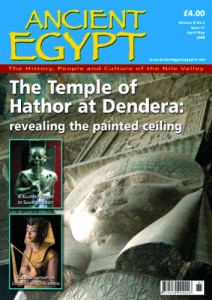
The funerary goods of Henutmer
Ingeborg Waanders lists the few known objects from this Theban burial, now scattered in museums and private collections world-wide.
http://www.ancientegyptmagazine.com/index.shtml
Vol 8 Issue 5 - April/May 2008


Home | About This Site | Privacy Statement | Gallery | Testimonials | Guarantees
About Collectors' Resources pages | What's New
Search | Site Map | Contact Us